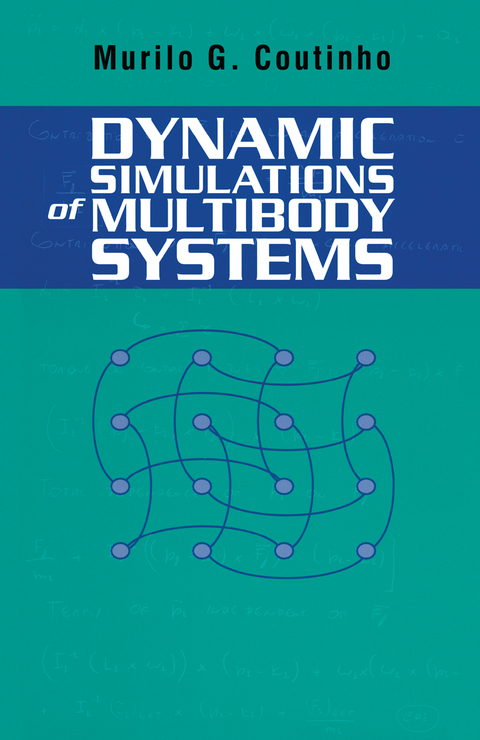
Dynamic Simulations of Multibody Systems
Springer-Verlag New York Inc.
978-1-4419-2902-0 (ISBN)
1 Computational Dynamics.- 2 Hierarchical Representation of 3D Polyhedra.- 3 Particle Systems.- 4 Rigid-Body Systems.- 5 Articulated Rigid-Body Systems.- A Useful 3D Geometric Constructions.- A.1 Introduction.- A.2 Projection of a Point on a Line.- A.3 Projection of a Point on a Plane.- A.4 Intersection of a Line Segment and a Plane.- A.5 Closest Point between a Line and a Line Segment.- A.6 Computing the Collision- or Contact-Local Frame from the Collision- or Contact-Normal Vector.- A.7 Representing Cross-Products as Matrix-Vector multiplication.- A.8 Suggested Readings.- B Numerical Solution of Ordinary Differential Equations of Motion.- B.1 Introduction.- B.2 Euler Method.- B.2.1 Explicit Euler.- B.2.2 Implicit Euler.- B.3 Runge-Kutta Method.- B.3.1 Second-Order Runge-Kutta Method.- B.3.2 Forth-Order Runge-Kutta Method.- B.4 Using Adaptive Time-Step Sizes to Speed Computations.- B.5 Suggested Readings.- C Quaternions.- C.1 Introduction.- C.2 Basic Quaternion Operations.- C.2.1 Addition.- C.2.2 Dot product.- C.2.3 Multiplication.- C.2.4 Conjugate.- C.2.5 Module.- C.2.6 Inverse.- C.3 Unit Quaternions.- C.4 Rotation-Matrix Representation Using Unit Quaternions.- C.5 Advantages of Using Unit Quaternions.- C.6 Suggested Readings.- D Rigid-Body Mass Properties.- D.1 Introduction.- D.2 Mirtich’s Algorithm.- D.2.1 Volume-Integral to Surface-Integral Reduction..- D.2.2 Surface-Integral to Projected-Surface-Integral Reduction.- D.2.3 Projected-Surface-Integral to Line-Integral Reduction.- D.2.4 Computing the Line Integrals from the Vertex Coordinates.- D.3 Suggested Readings.- E Useful Time Derivatives.- E.1 Introduction.- E.2 Computing the Time Derivative of a Vector Attached to a Rigid Body.- E.3 Computing the Time Derivative of a Contact-Normal Vector.- E.3.1Particle-Particle Contact.- E.3.2 Rigid Body-Rigid Body Contact.- E.4 Computing the Time Derivative of the Tangent Plane.- E.5 Computing the Time Derivative of a Rotation Matrix.- E.6 Computing the Time Derivative of a Unit Quaternion.- E.7 Suggested Readings.- F Convex Decomposition of 3D Polyhedra.- F.1 Introduction.- F.2 Joe’s Algorithm.- F.2.1 Determining Candidate Cut Planes.- F.2.2 Computing the Cut Face Associated with a Cut Plane.- F.2.3 Termination Conditions.- F.3 Suggested Readings.- G The Linear-Complementarity Problem.- G.1 Introduction.- G.2 Dantzig’s Algorithm: The Frictionless Case.- G.2.1 Termination Conditions.- G.3 Baraff’s Algorithm: Coping with Friction.- G.3.1 Static-Friction Conditions.- G.3.2 Dynamic Friction.- G.3.3 Termination Conditions.- G.4 Suggested Readings.- H Software Implementation.- References.
| Zusatzinfo | XV, 379 p. |
|---|---|
| Verlagsort | New York, NY |
| Sprache | englisch |
| Maße | 155 x 235 mm |
| Themenwelt | Informatik ► Grafik / Design ► Digitale Bildverarbeitung |
| Mathematik / Informatik ► Informatik ► Theorie / Studium | |
| ISBN-10 | 1-4419-2902-9 / 1441929029 |
| ISBN-13 | 978-1-4419-2902-0 / 9781441929020 |
| Zustand | Neuware |
| Informationen gemäß Produktsicherheitsverordnung (GPSR) | |
| Haben Sie eine Frage zum Produkt? |
aus dem Bereich


